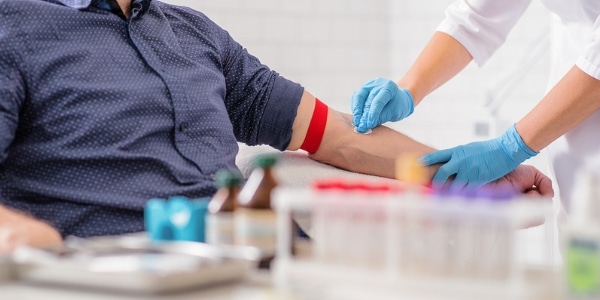A new research study from Northwestern University has discovered a new method that measures an individual’s circadian rhythm using a blood test.
The way your genes are expressed through the translation method using amino acids helps determine the health risks you have on any given day. In any particular 24-hour period, half of your body’s genes are activated and able to impact your body by leaving a mark in your bloodstream. This relates directly to how the Northwestern University study can measure a person’s internal circadian rhythms with a blood test.
A Blood Test Tells the Time in Your Body
Computational biologist Rosemary Braun of Northwestern University, along with experts in sleep medicine and circadian biology Phyllis Zee and Ravi Allada, worked together to create a blood test using the activity rates in a number of genes to determine the internal time of an individual, according to Braun’s article in Discover Magazine.
The circadian rhythm or internal clock is the time your body thinks it is regardless of the actual time of the day. Often, people may think that it is really four in the morning when their alarm goes off, showing 7:00 AM. This means our internal clock is not in sync with the outside world. The internal circadian rhythm and its being in sync with real-world time can have a big effect on an individual’s health.
The researchers attempted to use gene activity to measure this internal clock, so they developed a computational algorithm called TimeSignature. Using two blood tests, this algorithm can measure a person’s circadian rhythm.
The Process of Designing TimeSignature to Assess Circadian Rhythm
 When it comes to creating this new method, the researchers knew it had to be easy to administer, very accurate and robust, which means it needed to provide the correct measurement regardless of certain circumstances (such as whether the patient had a good night’s sleep or was awake half the night).
When it comes to creating this new method, the researchers knew it had to be easy to administer, very accurate and robust, which means it needed to provide the correct measurement regardless of certain circumstances (such as whether the patient had a good night’s sleep or was awake half the night).
The researchers collected tens of thousands of assessments every couple of hours from a group of volunteers. The measurements showed just how active particular sets of genes were within the adult’s bloodstream throughout the day. Then the researchers developed the TimeSignature algorithm, which could analyze and search the data to determine a set of biomarkers that would tell the person’s internal clock.
“This is a much more precise and sophisticated measurement than identifying whether you are a morning lark or a night owl,” claims Rosemary Braun, assistant professor of preventive medicine at the Northwestern University Feinberg School of Medicine. She goes on to explain, “We can assess a person’s biological clock to within 1.5 hours. Various groups have tried to get at internal circadian time from a blood test, but nothing has been as accurate or as easy to use as TimeSignature.”
How the Internal Clock Measurements Could Improve Patients’ Health
According to the American Association of Retired Persons (AARP), the TimeSignature method for determining the body’s internal clock may help physicians in the long run. It may help doctors better understand the best times during the day for each patient to exercise, eat, work, and sleep. It may even assist physicians in understanding the best time of day for patients’ bodies to be receptive to medicines or other treatments including chemotherapy or blood pressure medication.
People who have had their circadian rhythms disrupted tend to suffer from various illnesses. Shift work, taking care of a newborn or jet lag can all lead to these types of disruptions. The type of problems associated with internal-clock disruptions include depression, neurodegenerative diseases, diabetes, and heart disease.
These internal clock measurements, however, can help doctors better understand whether someone is out of sync with his or her body’s normal internal circadian rhythm. If a doctor can pinpoint that someone is suffering from an internal-clock disruption, he or she can use light exposure or the sleep hormone melatonin to help realign the person’s sleeping habits and internal clock.
Clearly, TimeSignature can make a major difference in the lives of patients worldwide.





